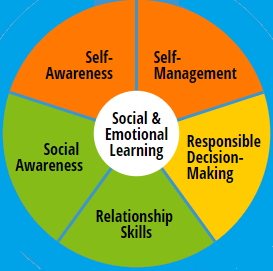Consideration of Multilingualism in Workplace Communication – “Multilingual Monday Blog Series, Part 7”

This blog series focuses on discussing multilingualism and multiculturalism specifically from four different perspectives: linguistic and cultural repertoire, linguistic and cultural landscape, the connection between language and culture, and the identity of a multilingual person. Blogs will be published once a week on Mondays until May 9, 2022.
Blog 1: Multilingualism and Multiculturalism as a Phenomenon
Blog 2: Linguistic Repertoire From the Perspective of a Multilingual Person
Blog 3: Thoughts on Language and Multilingualism
Blog 4: Connection Between Language, Nonverbal Communication and Culture
Blog 5: Multilingual Life Stories: Humak Interpreting Students as Interviewers
Blog 6: Changes in Language Relations and Responding to Them in Finland
Blog 7: “Consideration of Multilingualism in Workplace Communication”
Many workplaces in Finland employ people whose mother tongue is not Finnish. It is interesting to make observations about how multilingualism is addressed at work and how it is taken into account in daily workplace interactions. This topic can be considered from a number of different perspectives, and one very rewarding way is to begin from interpersonal and social skills precisely from the perspective of multilingualism. I will mirror them in this story to some typical situations involving employees who use different languages as their mother tongue.
Social and Emotional Competence as a Basis for Interpersonal Skills
Functional interaction can be addressed by working on one’s own behavior and thinking in communicative situations. Interpersonal skills are based on an individual’s level of social and emotional competence and how this competence can be applied in a communicative situation. Social and emotional competence is strongly linked to the examination and evaluation of one’s own behavior and thinking which, in turn, leads to changes in one’s behavior and thinking.
Social and emotional learning (SEL) can thus be understood as the basis of interpersonal skills. The SEL model has been developed by an organization of researchers called Casel (Collaborative for Academic, Social and Emotional Learning) initially for pupils and students to use in school. However, the model is versatile and is also suitable for studying interactions within an organization.
Social and emotional learning is a process by which a person acquires and applies knowledge, skills and attitudes to develop a healthy identity, regulate emotions and achieve personal and common goals, feel empathy for others and also show it to others, build and manage relationships and make decisions that show both responsibility and caring (Casel 2008, Winter and Klemola 2017).
Different Aspects of the SEL Model
The model developed by Casel focuses on five areas: self-awareness, self-management, responsible decision-making, relationship skills, and social awareness. Self-awareness emphasizes the identification of one’s own feelings, values, weaknesses, and strengths. Responsible decision-making means making ethically sustainable and constructive choices, whereas social awareness is about showing understanding and empathy for others. Self-management emphasizes the regulation of one’s own feelings and behaviors to achieve one’s own goals (Casel 2008). An employee can develop their own interpersonal skills by paying special attention to the above-mentioned elements of social and emotional learning. This theory can be used to reflect on one’s own interpersonal skills from the perspective of multilingualism. In this blog, I will focus more closely on the interpersonal and social skills related aspects of this theory.

Relationship Skills and Consideration of Multilingualism in the Workplace
Relationship skills include the ability to create and maintain healthy and supportive relationships. In addition, this includes being able to work with different people and groups. Relationship skills include active listening and communication skills as well as the ability to collaborate, with a focus on problem solving and constructive negotiation in a potential conflict situation. Relationship skills also include activities appropriate for the situation that meet different social and cultural requirements and opportunities. Strong relationship skills also include the ability to ask for and provide help.
Relationship skills provide answers to the following questions: How do I communicate effectively and comprehensibly? How do I create and maintain positive relationships? How do I demonstrate cultural competence? How do I develop my teamwork skills and how do I solve problems together with others? How do I resolve conflicts in a constructive way? How do I resist negative social pressure? How do I show leadership in a group? Am I able to ask questions and offer help? How do I defend the rights of others?
Organization’s Internal Cultural Competence
From the perspective of taking multilingualism into account, strong relationship skills include, above all, taking into account every employee linguistically in all interactions that arise at work. When an organization hires a person whose mother tongue is not Finnish, that organization should at the same time undertake to take this employee into account linguistically. It would be a demonstration of equality and also an indication that multilingualism is perceived in the organization as a wealth and something that should be supported and emphasized. This requires the organization to make decisions and take concrete measures to ensure that all employees are integrated into the organization’s operations and interactions within it.
These decisions and measures are part of the organization’s internal cultural competence and the cornerstone of this cultural competence is being aware of and responding to the organization’s internal language needs. An employee who does not speak Finnish as their mother tongue must be able to ask for help and react to the situation in which they feel like an outsider. The experience of a linguistic sense of externality is not pleasant. This emotional experience can be tested, for instance, by traveling with an Italian group who constantly forget that you do not speak Italian like they do. Then we are outside the linguistic bubble.
Multilingualism Awareness Improves Well-Being at Work
In the workplace, similar issues could arise in an information session for all employees, a group meeting or a two-way discussion. When an organization organizes an information session for all employees and is aware that there are, for example, three people that speak sign language, one that speaks French and two native English speaking employees whose Finnish language skills are not sufficient to understand all the information given in Finnish, several different measures can be taken. French and English can be integrated so that, for example, the entire information session is organized in English, which is also well mastered by the French person.
Another option would be to provide simultaneous or written interpreting, use plain language, or use English slides. Sign language speaking employees can be integrated into the interaction, for example, by making sure that all other employees are able to consider the sign language interpreter during their own speech. This can be done by speaking calmly, taking adequate breaks, sending their slides to the interpreter in advance, etc. An organization can demonstrate caring and consideration by using web applications that best serve interpretation purposes (Zoom, not Teams).
Rotating Languages
The “dominant language” used in group meetings at work may vary, for example, with a rotation system. If an employee who cannot use spoken Finnish as their conversational language participates in the group meeting, it is possible to use this particular employee’s mother tongue as the main language in the meeting. This measure supports well-being at work by providing a sense of being taken into account. Also in two-way conversations involving two employees who speak a different language as their mother tongue (e.g. Swedish and Finnish), the language of the meeting could be different each week – sometimes Finnish, sometimes Swedish, and sometimes English.
Applying multilingualism awareness in the workplace has a positive effect on everyone. If meetings are sometimes held in English, for example, both the language and the aspects related to multilingualism and cultural awareness are practiced. Internationality and the language repertoire within the organization become visible. In addition, everyone feels taken into account in the communication situation, which increases well-being at work. Failure to respond to language needs creates a sense of externality and can also lead to some employees not receiving important information.
Relationship Skills and Consideration of Multilingualism in the Workplace
This area of expertise includes the ability to understand other people’s perspectives and empathize with other people’s worlds of thought, covering people from different backgrounds, cultures and contexts. Social awareness competence includes the ability to feel compassion for others, to understand the behavior of others in a broader historical and social context, and to identify family, school, and community resources. A solid foundation of social awareness provides answers to the following questions: What is the perspective of the person I am currently talking to? What are other people’s strengths? How can I show empathy and compassion? How can I show that I am interested in how the other person feels? How can I understand and show gratitude? How can I identify social norms? How do I identify situational requirements and opportunities? How do I learn to understand the impact of organizations and systems on behavior?
When this aspect of social and emotional learning is applied to multilingualism in the workplace, an employee who speaks Finnish as their mother tongue could consider what those people may feel who are linguistically excluded from the common gatherings of the work community. This would make it easier for everyone to do the right thing in situations where users of different languages are involved.
References
Casel 2008. Accessed 7.4.2022. https://casel.org/fundamentals-of-sel/
Talvio, Markus ja Klemola, Ulla. 2017. Toimiva vuorovaikutus. Jyväskylä: PS-Kustannus.
Text: Lena Segler-Heikkilä, PhD., Principal Lecturer, Interpreting and Linguistic Accessibility, Humak University of Applied Sciences
Translation: Mari Ervasti

